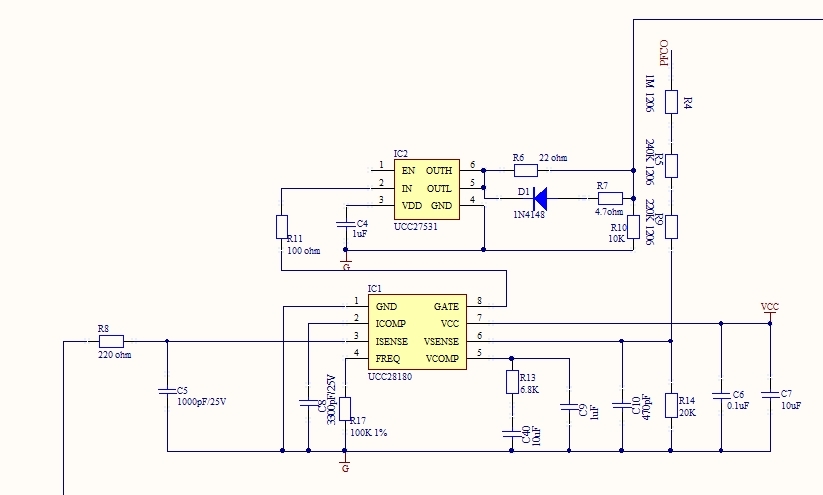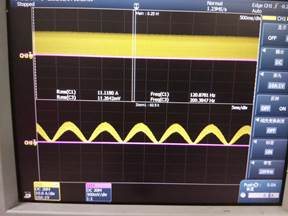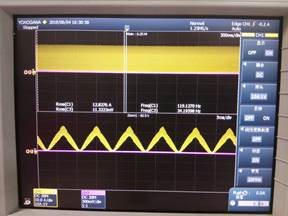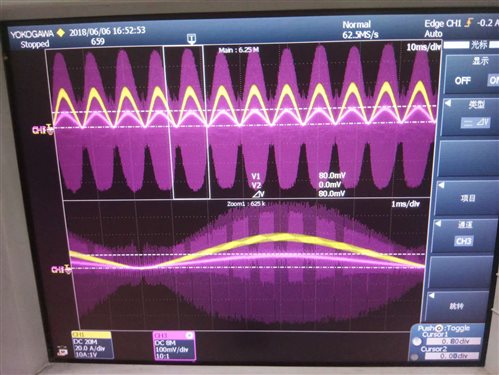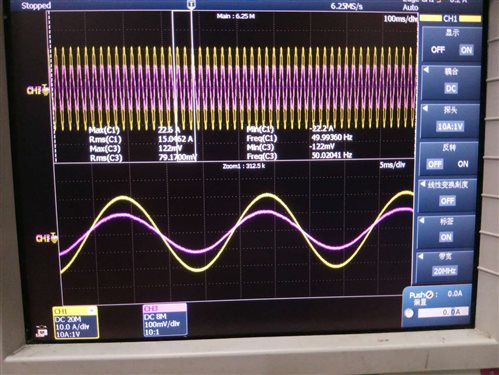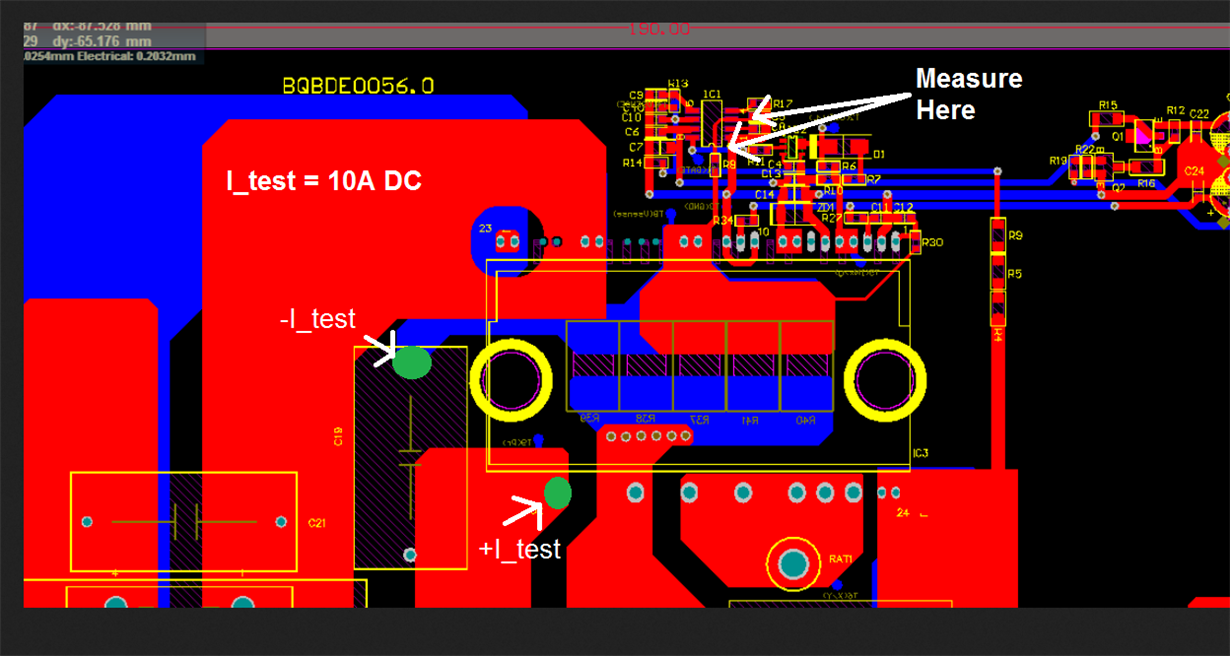Other Parts Discussed in Thread: UCC28070
We are using UCC28180 for PFC debugging, and the following problems are encountered:
The output power of the target is 6000W. When reaching 4000W, the PFC current waveform becomes worse and the PF value drops.Please help!
Design parameters:
1. Input voltage range: 187v-254v normal operating voltage: 230V
More than 94% efficiency is required
3. Working power frequency: 45-65hz
4. Output power: 6000W
5. Output voltage: 370VDC
6.PFC inductance: 0.55mH
7. Typical output capacitance: 930uF*3=2790uF
Design circuit diagram and parameter selection are as follows:
AC 200V input load 3000W, inductance current waveform:
AC 200V input load 3200W, inductance current waveform:
AC 200V input load 3500W, inductance current waveform:


